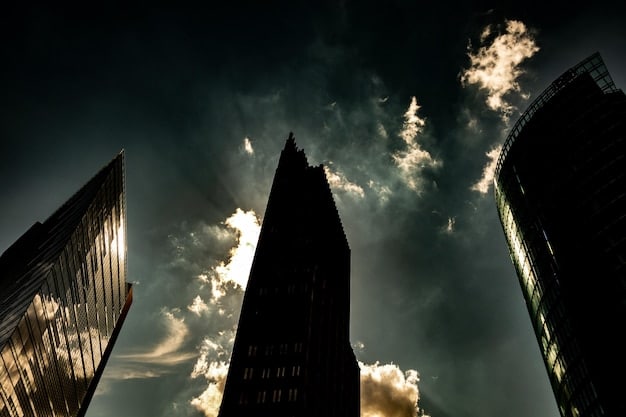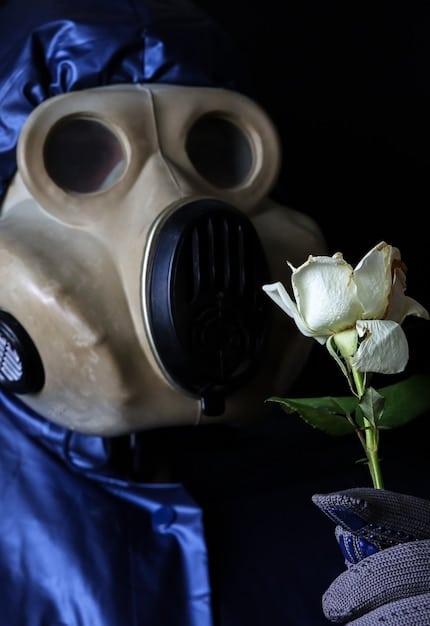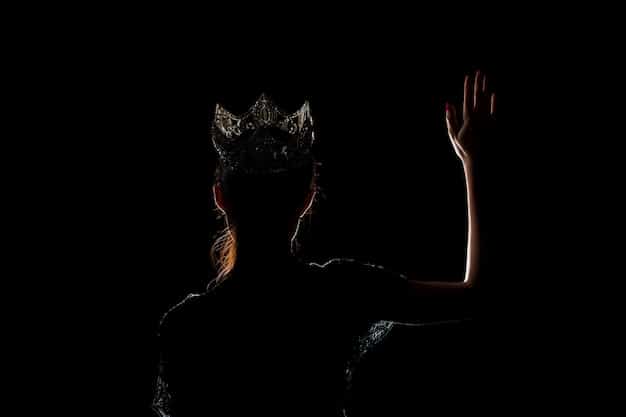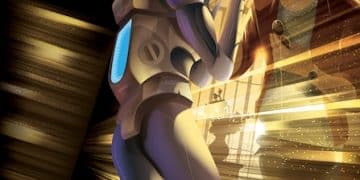The Dark Knight Rises: A Comprehensive Review

The Dark Knight Rises concludes Christopher Nolan’s Batman trilogy, delivering a visually stunning and narratively complex film that explores themes of hope, sacrifice, and the consequences of heroism. While some pacing and plot choices have been debated, its impact on the superhero genre remains undeniable.
Christopher Nolan’s The Dark Knight Rises serves as the epic conclusion to his groundbreaking Batman trilogy. Released in 2012, this film aimed to tie together the narratives established in “Batman Begins” and “The Dark Knight,” offering a final, definitive chapter in the story of Bruce Wayne’s crusade against crime in Gotham City.
A Cinematic Climax: Setting the Stage for The Dark Knight Rises
The Dark Knight Rises picks up eight years after the events of “The Dark Knight.” Gotham is seemingly at peace, thanks to Batman’s sacrifice and the Dent Act. However, a new threat emerges in the form of Bane, a masked mercenary with a mysterious past and a ruthless plan to bring Gotham to its knees.
Bane’s Arrival and Gotham’s Fall
Bane’s calculated assault on Gotham involves a series of strategic attacks that expose the city’s vulnerabilities. His arrival disrupts the fragile peace and forces Bruce Wayne to confront his past and reclaim his mantle as Batman.
As Bane’s influence grows, Gotham descends into chaos, with the city’s infrastructure collapsing and its citizens living in fear. The film portrays a city on the brink of collapse, highlighting the consequences of unchecked power and the importance of unity in the face of adversity.
- Gotham’s false sense of security after Harvey Dent’s death.
- Bane’s methodical dismantling of Gotham’s infrastructure.
- The psychological impact of Bane’s reign of terror on Gotham’s citizens.
The opening act of “The Dark Knight Rises” effectively establishes the stakes, setting the stage for a thrilling and emotionally charged conclusion to Nolan’s Batman saga. The film explores themes of social inequality, political corruption, and the resilience of the human spirit.

Bruce Wayne’s Journey: From Isolation to Redemption
In The Dark Knight Rises, Bruce Wayne is a broken man, haunted by the events of “The Dark Knight” and struggling to find purpose in a seemingly peaceful Gotham. His journey throughout the film centers on overcoming his physical and emotional limitations to become the hero Gotham needs.
Confronting Physical and Emotional Scars
Bruce’s self-imposed exile has taken a toll on his body and mind. He is physically weak and emotionally withdrawn, grappling with the loss of Rachel Dawes and the burden of his secret identity.
To reclaim his strength, Bruce embarks on a rigorous training regime, both physically and mentally. This journey of self-discovery allows him to confront his fears and rediscover his purpose, ultimately leading to his transformation back into Batman.
- Bruce Wayne’s initial reluctance to return to the role of Batman.
- The physical and mental challenges Bruce faces during his training.
- The impact of Selina Kyle (Catwoman) on Bruce’s journey.
Bruce Wayne’s transformation in “The Dark Knight Rises” is a testament to his resilience and unwavering commitment to Gotham City. His journey from isolation to redemption is a central theme of the film, highlighting the importance of hope, perseverance, and self-sacrifice.
The Enigmatic Villain: Understanding Bane’s Motivations
Bane presents a formidable challenge to Batman, both physically and ideologically. Unlike previous Batman villains, Bane’s motivations extend beyond mere chaos or personal gain, delving into themes of social justice and revolution.
Bane’s Background and Ideology
Bane’s backstory reveals a life of hardship and injustice, shaping his worldview and fueling his desire to dismantle Gotham’s corrupt system. His ideology resonates with the city’s disenfranchised, making him a dangerous and compelling antagonist.
Through his actions, Bane seeks to expose the hypocrisy of Gotham’s elite and redistribute wealth and power to the city’s oppressed. His methods, though extreme, are rooted in a desire for social change, blurring the lines between villainy and revolution.
- The influence of Bane’s past on his actions in Gotham.
- The appeal of Bane’s message to Gotham’s marginalized communities.
- The moral complexities of Bane’s methods and goals.
Bane’s character in “The Dark Knight Rises” challenges audiences to consider the complexities of morality and the potential for good intentions to be corrupted by extreme ideologies. His presence forces Batman to confront not only a physical threat but also a philosophical one, raising questions about justice and the nature of heroism.
Supporting Cast: New Alliances and Familiar Faces
The Dark Knight Rises introduces new characters and expands upon existing ones, creating a rich ensemble cast that complements Bruce Wayne’s journey. These characters provide support, challenge his beliefs, and contribute to the film’s overarching themes.
Selina Kyle (Catwoman): Ally or Adversary?
Selina Kyle, portrayed as a morally ambiguous cat burglar, adds layers to the narrative. Her relationship with Bruce Wayne is complex, oscillating between alliance and rivalry, as she grapples with her own sense of justice and survival.
Selina’s skills and resourcefulness prove invaluable to Batman, while her cynical outlook forces him to confront the harsh realities of Gotham’s underbelly. Their dynamic adds depth to the film’s exploration of morality and redemption.

John Blake: A New Hope for Gotham
John Blake, an idealistic young police officer, represents a new generation of hope for Gotham. His unwavering belief in justice and his admiration for Batman inspire Bruce Wayne to consider a future beyond his own sacrifice.
Blake’s character serves as a reminder of the potential for good, even in the darkest of times. His dedication to Gotham provides a sense of optimism amidst the chaos and destruction wrought by Bane.
The supporting cast in “The Dark Knight Rises” enriches the film’s narrative, providing emotional resonance and thematic depth. Their interactions with Bruce Wayne highlight the importance of community, collaboration, and the enduring power of hope.
Visual Spectacle and Action Sequences: Nolan’s Signature Style
Christopher Nolan’s The Dark Knight Rises is renowned for its stunning visuals, practical effects, and intricately choreographed action sequences. These elements contribute to the film’s immersive and visceral experience, capturing the scale and intensity of the conflict in Gotham.
Practical Effects and Realism
Nolan’s preference for practical effects over CGI lends a sense of realism to the film’s action sequences. The elaborate sets, stunts, and explosions create a tangible and believable world.
The use of practical effects enhances the impact of the action, making the fight scenes more visceral and engaging. This commitment to realism contributes significantly to the film’s overall sense of authenticity.
- The opening plane hijacking sequence.
- The destruction of Heinz Field during a football game.
- The climactic battle between Batman and Bane.
The visual spectacle in “The Dark Knight Rises” is a testament to Nolan’s meticulous attention to detail and his commitment to creating a cinematic experience that is both visually stunning and emotionally resonant. The film’s action sequences are not only thrilling but also serve to advance the narrative and explore the characters’ motivations.
Themes and Legacy: The Dark Knight Rises in Retrospect
The Dark Knight Rises explores complex themes of hope, despair, sacrifice, and the cyclical nature of heroism, solidifying its place in cinematic history. Its lasting legacy raises questions about justice, order, and the power of symbols.
The Enduring Power of Symbols
Batman, as a symbol, represents hope and justice, inspiring the citizens of Gotham to rise above their circumstances. The film explores how symbols can be both powerful tools for change and potential targets for manipulation.
Ultimately, “The Dark Knight Rises” suggests that the true power of a symbol lies in its ability to inspire others to act, carrying on the legacy of heroism and fighting for a better future.
- The role of Batman as a symbol of hope for Gotham.
- The film’s exploration of the cyclical nature of heroism.
- The legacy of “The Dark Knight Rises” in popular culture.
The Dark Knight Rises leaves a lasting legacy, prompting viewers to consider the complexities of heroism, the importance of social justice, and the enduring power of hope in the face of adversity. While the trilogy concludes, its themes and questions continue to resonate with audiences, solidifying its place as a landmark achievement in superhero cinema.
| Key Point | Brief Description |
|---|---|
| 🎬 Nolan’s Finale | Concludes Nolan’s Batman trilogy with a complex narrative. |
| 🎭 Bruce’s Journey | Focuses on Bruce Wayne’s path from isolation to redemption as Batman. |
| 🦹 Bane’s Motivations | Explores Bane’s background and revolutionary ideology. |
| 🌟 Legacy | Discusses the film’s themes and its lasting impact on cinema. |
FAQ
▼
The film depicts Batman’s return to action after eight years to combat Bane, a masked terrorist who threatens Gotham. Bruce Wayne must overcome his physical and emotional wounds to save the city.
▼
The film wraps up Bruce Wayne’s character arc, showing him finding peace and passing on the mantle of Batman. It provides closure to the themes and storylines established in the previous films.
▼
Bane is the primary antagonist, a physically imposing and intellectually cunning mercenary. He aims to dismantle Gotham’s society, motivated by a desire to expose its corruption and inequality.
▼
Key themes include sacrifice, redemption, hope, and the consequences of unchecked power. The film also explores the idea of rising against adversity and the potential for ordinary people to be heroes.
▼
The film received generally positive reviews, praised for its ambition, visuals, and performances. While some critics noted issues with pacing and plot, it’s regarded as a satisfying conclusion to the trilogy.
Conclusion
In conclusion, The Dark Knight Rises delivers a visually stunning and narratively complex conclusion to Christopher Nolan’s Batman trilogy. While some aspects may be debated, its exploration of themes like sacrifice, hope, and the consequences of heroism solidifies its place as a landmark film in the superhero genre.





